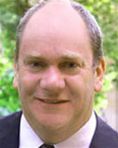The allocation of radio spectrum, new business models, cyber-security and the connected car took centre stage at the 5GHuddle (organised by the Wireless World Research Forum (WWRF) and in partnership with DI ITEK) as delegates discussed the disruptive nature of 5G technologies, with security and privacy emerging as the key challenges in delivering a sustainable 5G ecosystem.Opening the second day of the 5G Huddle, Stuart Revell, former chief technology officer of Tech UK, began the discussions on the main challenges for the 5G community by presenting the Wireless Test & Innovation Centre (WTIC) whitepaper to over 150 delegates including leading scientists, high-level industry and government representatives from Europe, North America and Asia.
During the first session, Ming Lei, Huawei, presented the IMT-2020 promotion group and the FuTURE Forum initiative, discussing their international co-operation projects and how to rethink mobile communications of the future in their 2020+ White Paper.
Spectrum Allocation

Spectrum allocation was identified as one of the main challenges to making the leap forward in 5G deployment. The debate over what spectrum should be made available for 5G will be, as Andrew Hudson, policy director of the Spectrum Group at Ofcom, said: “uncomfortable”. Leaving too many bands under consideration could make a positive outcome less likely, as “lots of people might have to give a little bit”, adding that it’s not regulators’ job to “make everyone happy” but to “debate the important questions.”
Wladimir Bocquet, head of policy planning at GSMA, said: “operators understand that there are some existing services in those bands, and the parties by consensus should agree on what spectrum they want for 5G. GSMA isn’t saying it wants all spectrum between 6 GHz and 100 GHz for 5G. There’s no black and white.”

Chih-Lin I, chief scientist of Wireless Technologies at China Mobile, said: “in the short term, C-band would be the core spectrum of 5G: “we want it to become key piece of 5G architecture.”
On the role of the regulators in the spectrum debate, Jakob Henrik Juul, Head of Division of the Danish Energy Agency said, “for 5G, they need a clear timeline to know what the demand is, because it takes time to award spectrum licenses and deal with technological developments”.
Anders Bohlin, senior economist at the European Investment Bank,said: “If governments auction 5G spectrum to fill their treasury coffers and then operators don’t invest because there’s no market, that won’t be good for 5G.”

For Wassim Chourbaji, Qualcomm, industry and policymakers must address investment; be “more bold” in harmonising spectrum for 5G, set predictable policy and create non-proprietary standards. Regarding business models for 5G, he said: “the ones who will make money are the ones who are controlling the data.”
Business Models
As Mischa Dohler, head of centre for telecommunication research in the Department of Informatics at Kings College, London, commented, “business models may be the main shift in a 5G era, as the change to B2B could be attractive for the cellular industry.”
Christian Kloch, said: “5G “is all about use cases”. Good use cases need a strong network, and the Internet of Things. Telecoms operators must collaborate with other industries to show them how they can benefit from 5G.”
For Pasi Kemppainedm, NNE Pharmaplan, this is the telecom industry’s “last chance” to stretch its services to compete with big players like Google and Facebook. The disruptive part of 5G isn’t the radio access part, but the services infrastructures. Facebook, Google and others will “eat your lunch” in future services if telcos don’t deal with services infrastructure. Also, telecom companies shouldn’t let 5G limit the start of service enablement. Services should be agnostic, and when 5G becomes ready, operators can move to better capability to provide those services.
Automotive Industry
Opening a session at the event that focused specifically on the potential of 5G in the automotive industry, Preben Mogensen, principal engineer at Nokia Network said: “we would like to see 5G as a framework to be optimised for the automotive industry”. Research challenges Nokia is working on for connected mobility include being able to support higher mobility, a lot of devices in a small space, ultra-reliability of networks, radio latency less than 1ms, network slicing and optimised service delivery for heterogeneous use cases. “Our challenge is enabling a new generation of latency critical services. We are working on research to improve resilience to network failures,” said by Preben Mogensen, principal engineer at Nokia Network.
Dr. Ilaria Thibault, Vodafone also presented, taking a look at what 5G’s role in vehicular communications will be.
Peter Vermaat, principal ITS consultant at TRL, an independent research organisation, brought the road operator’s perspective to the 5G debate, agreeing that the connectivity requirements of vehicles are highly dependent on high network reliability and low latency, as well as co-operative services, said: “No single communication channel will be sufficient. We don’t want the whole network to break down because a base station is running out of power.”
“Without connectivity, research shows that, with the connected vehicle, safety goes down compared to a manually operated one. Self-driving cars are a long, long way off. Even Google cars are fully autonomous, but not in all circumstances.”
“Within the transport industry as a whole, there is scepticism that you need to overcome. We have heard promises before with 3 and 4G. The critical issue remains coverage. Road operators expect real long-term benefits from connected vehicles, as they are foreseeing to move people and goods over longer distances, and expect lower costs in running the road infrastructure. They are looking at increased safety, efficiency, data gathering, particularly at floating vehicles data. The car industry tends to look at technology in their own little bubble.” continued by Peter Vermaat, principal ITS consultant at TRL
Cyber-security
Aside from the challenges faced in implementing 5G, come the concerns – in particular the risk posed by cyber crime. Focusing on these potential vulnerabilities of the IoT and 5G era, Zolten Precsenyi, government affairs manager at Symantec, said: “cyber-security challenges arise not just from 5G in particular, but also from the connected world at large. Wearable devices, connected cars, e-health systems, smart grids are all vulnerable to attack. Current public policies for the telecoms, e-identification, network security and other areas don’t go far enough to protect against novel security issues. Self-regulation should be a credible alternative to government regulation”
Conclusions

Prof. Knud Erik Skouby, director of the centre for communication, Media and Information Technologies at Aalborg University, said: “Spectrum was much more at the core of discussion this year for the technical needs of 5G, especially the need seen from the user’s perspective than at last year’s inaugural 5G Huddle
“The business model this year has moved to the centre of the discussion and is not seen only from the telecom industry at large, but from the user’s point of view,” said by Dr Nigel Jefferies, Huawei, chair of WWRF, closing the 5G Huddle






